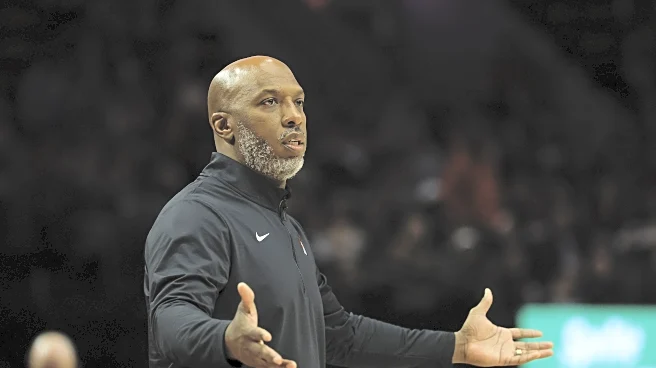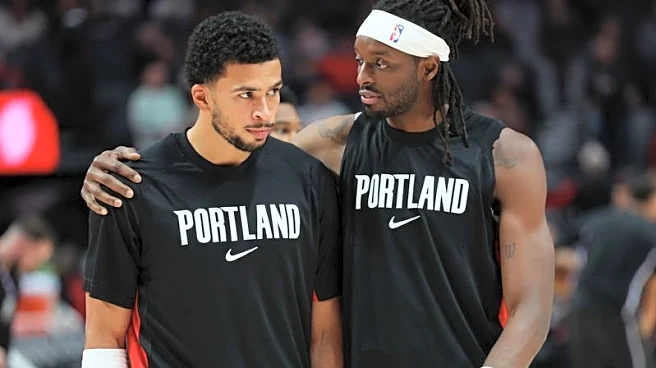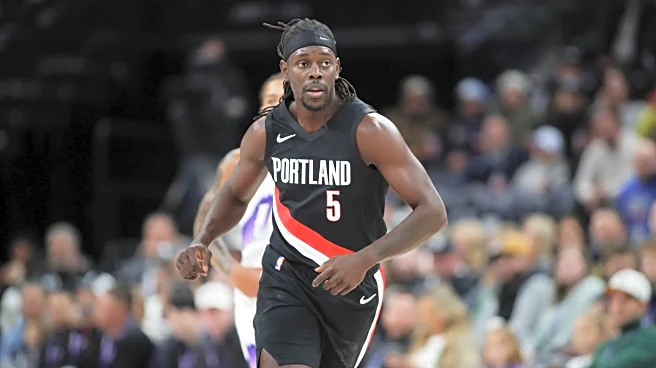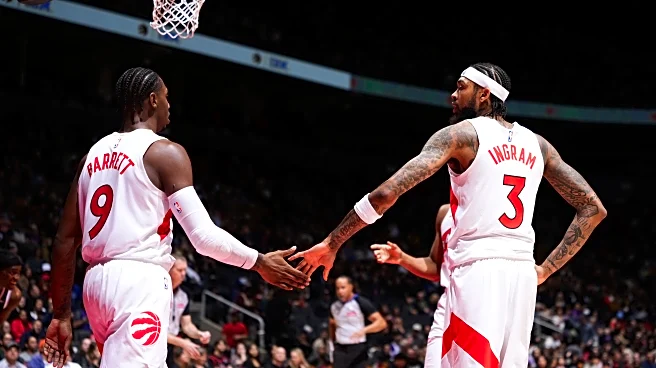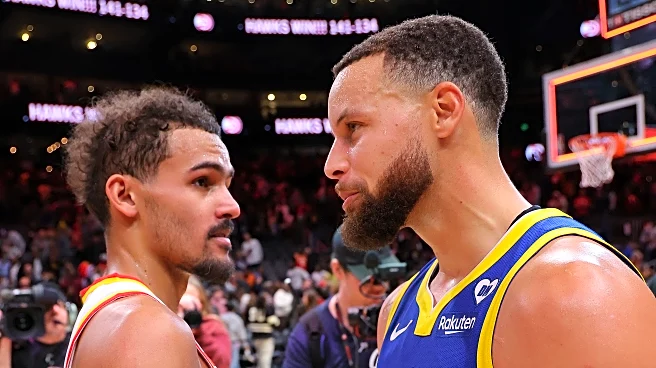What's Happening?
Damian Lillard, a significant offseason acquisition for the Portland Trail Blazers, will not be playing for the team as the 2025-26 NBA season begins. Lillard, who signed a three-year, $42 million contract with the Blazers, is sidelined due to a torn
left Achilles sustained in April during a playoff game with the Milwaukee Bucks against the Indiana Pacers. Following surgery in May, Lillard is expected to spend the season rehabilitating his injury. Despite his absence from the court, Lillard's return to Portland is significant, as he is the franchise's all-time leader in points and three-pointers. His decision to return was influenced by personal reasons, including his family's residence in Portland.
Why It's Important?
Lillard's absence is a considerable setback for the Trail Blazers, who were counting on his experience and leadership to boost their performance. His injury not only affects the team's immediate prospects but also highlights the risks associated with signing players recovering from significant injuries. For Lillard, the rehabilitation period is crucial for his career longevity and future contributions to the team. The situation underscores the broader challenges NBA teams face in managing player health and contract negotiations, especially with high-profile athletes. The Trail Blazers' strategy and performance this season will be closely watched as they navigate these challenges without one of their key players.
What's Next?
Lillard will focus on his rehabilitation throughout the 2025-26 season, with hopes of returning to the court in the following season. The Trail Blazers will need to adjust their strategies and rely on other players to fill the void left by Lillard's absence. The team's management will also have to consider long-term plans for integrating Lillard back into the lineup once he is fully recovered. Fans and analysts will be monitoring Lillard's recovery progress and the team's performance in his absence, which could influence future decisions regarding player acquisitions and team dynamics.



